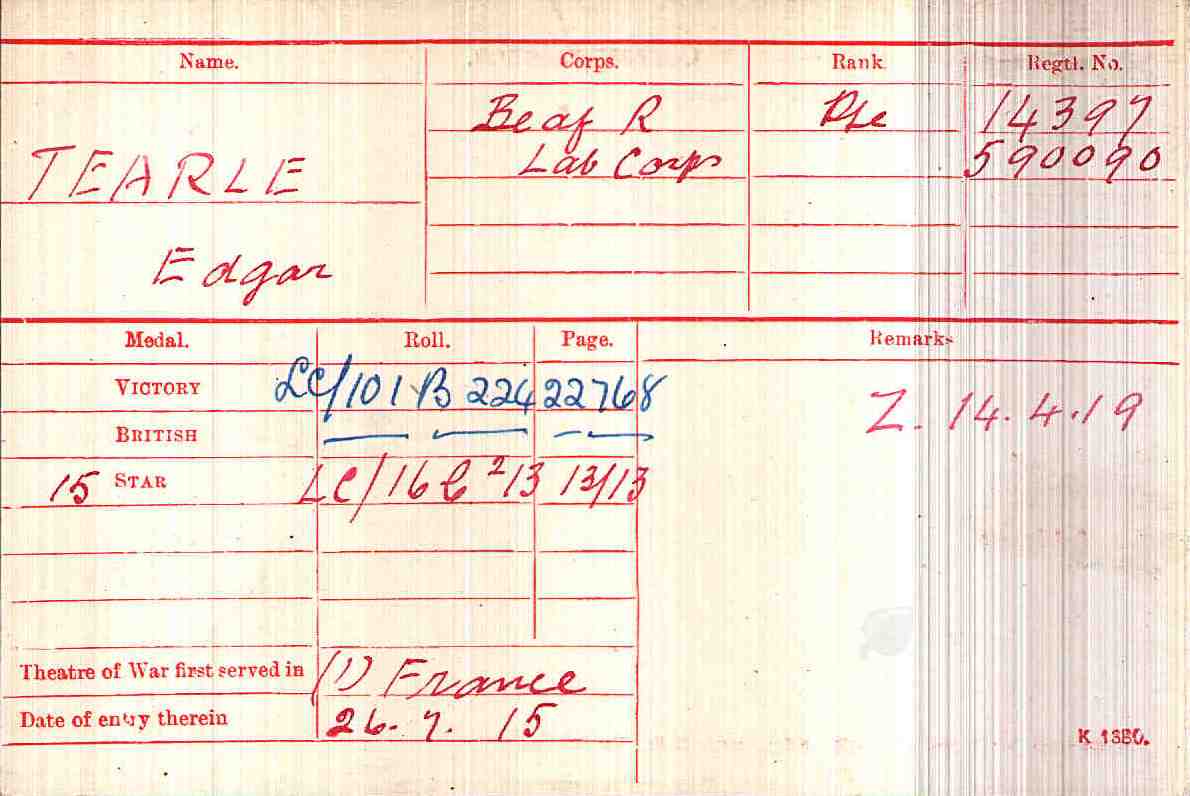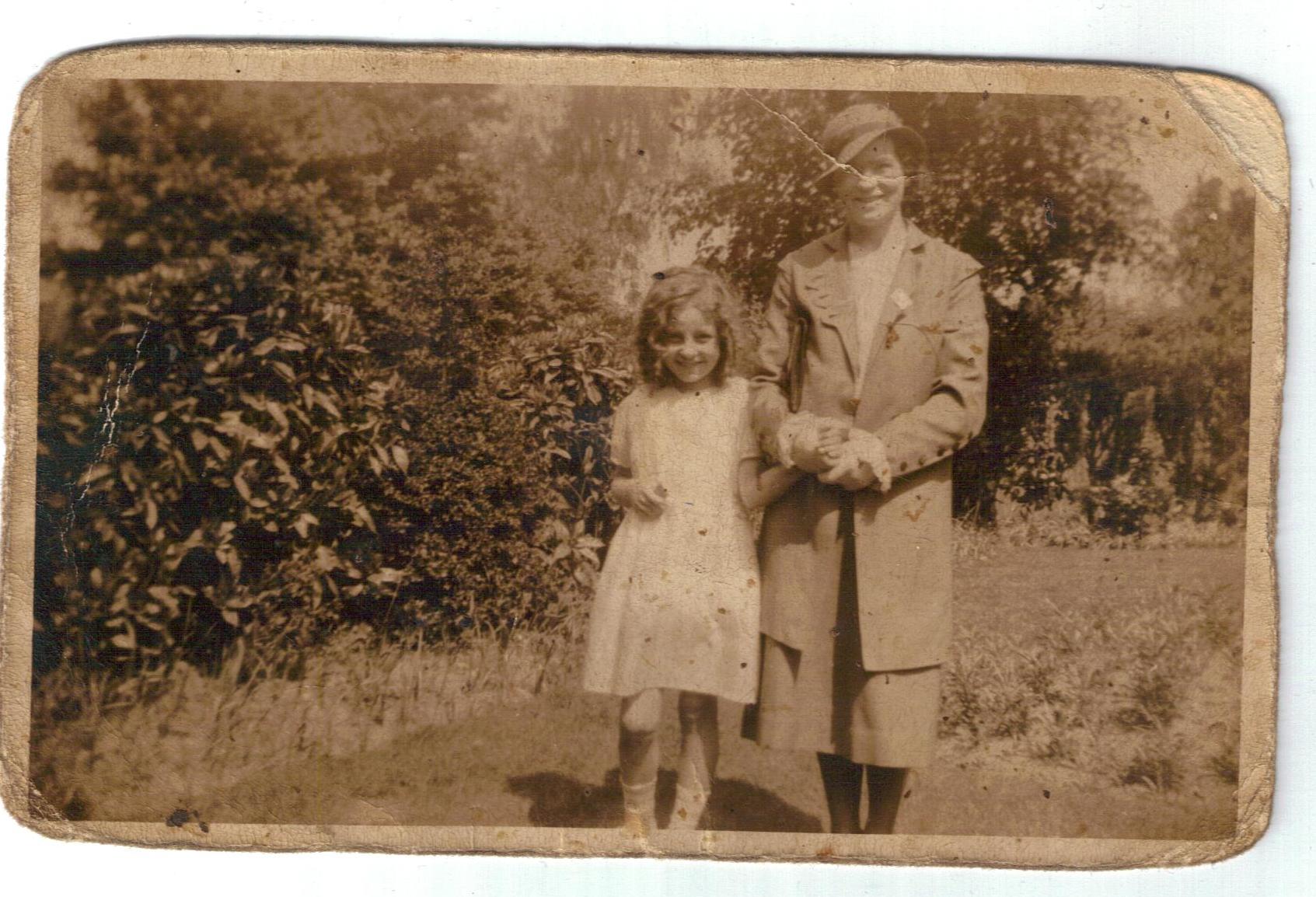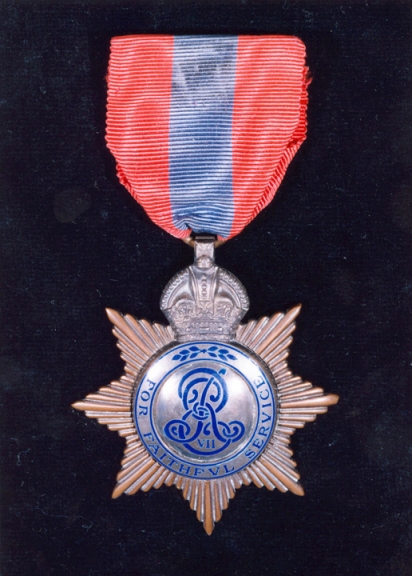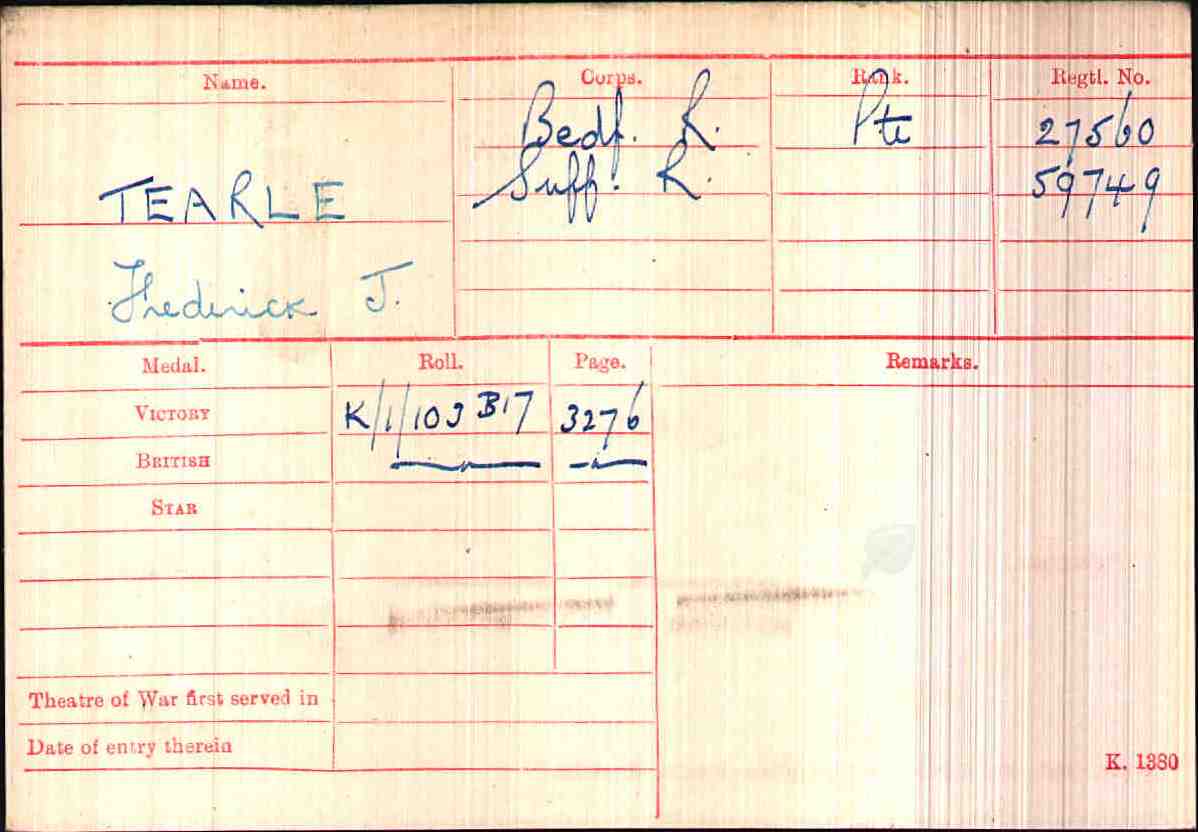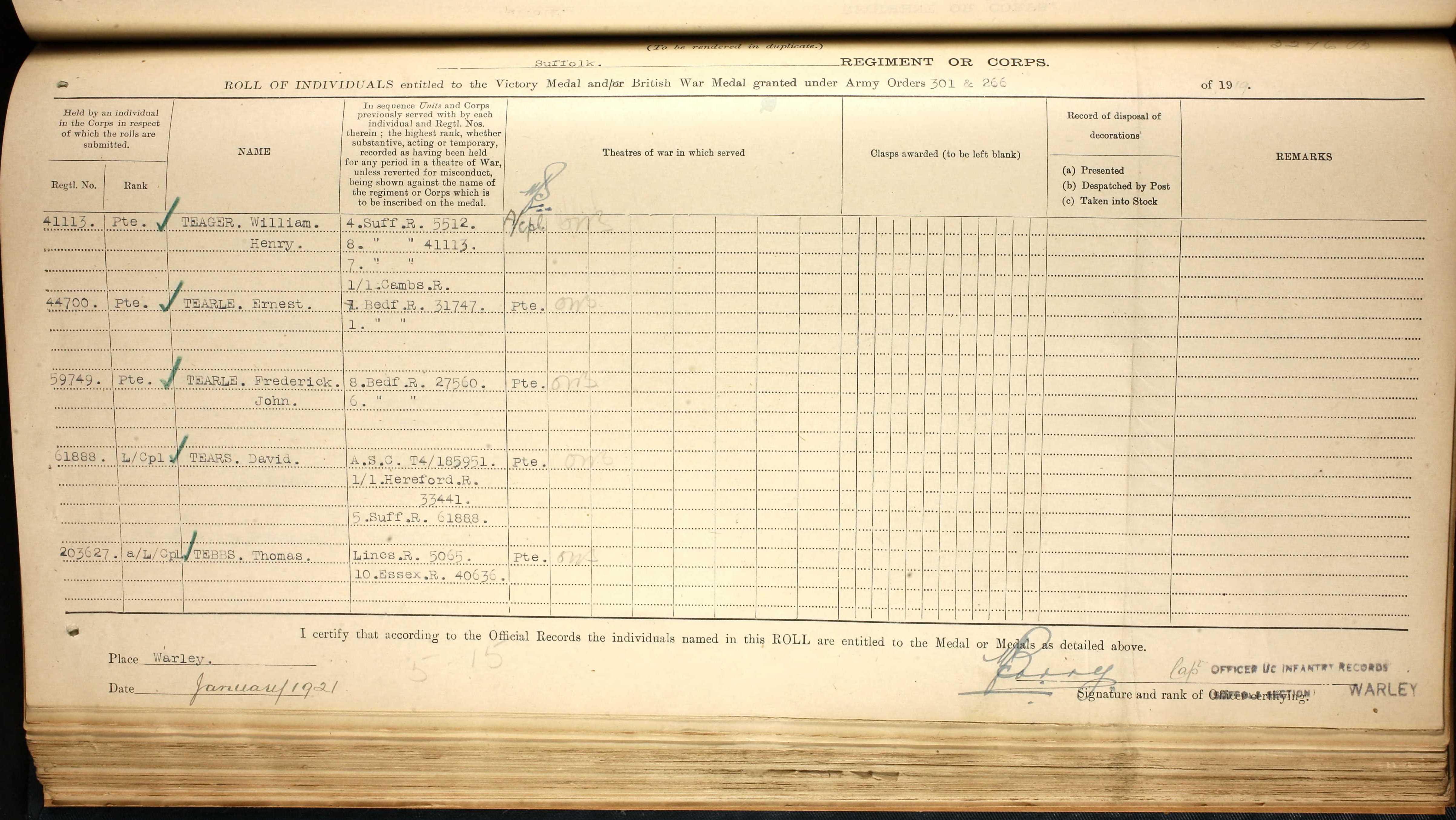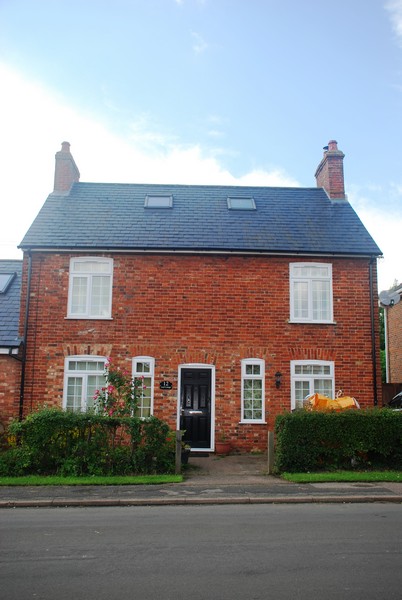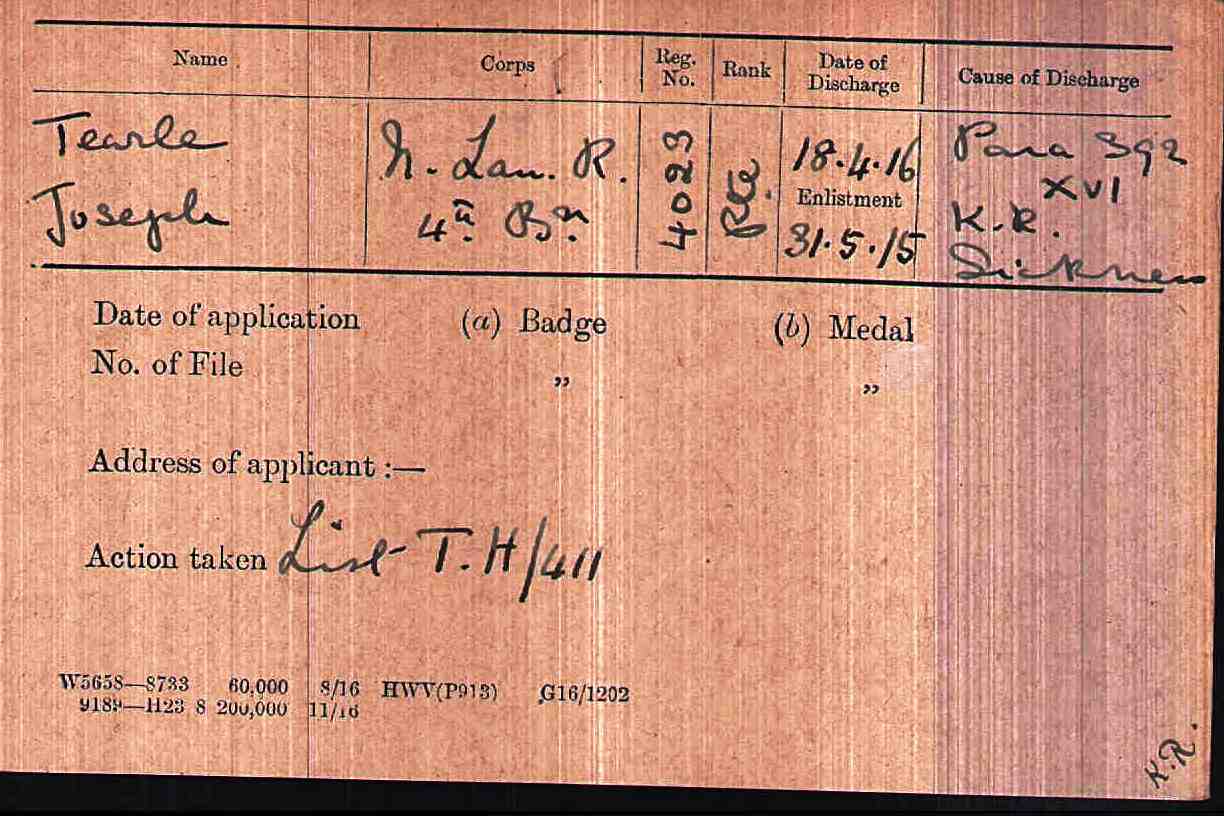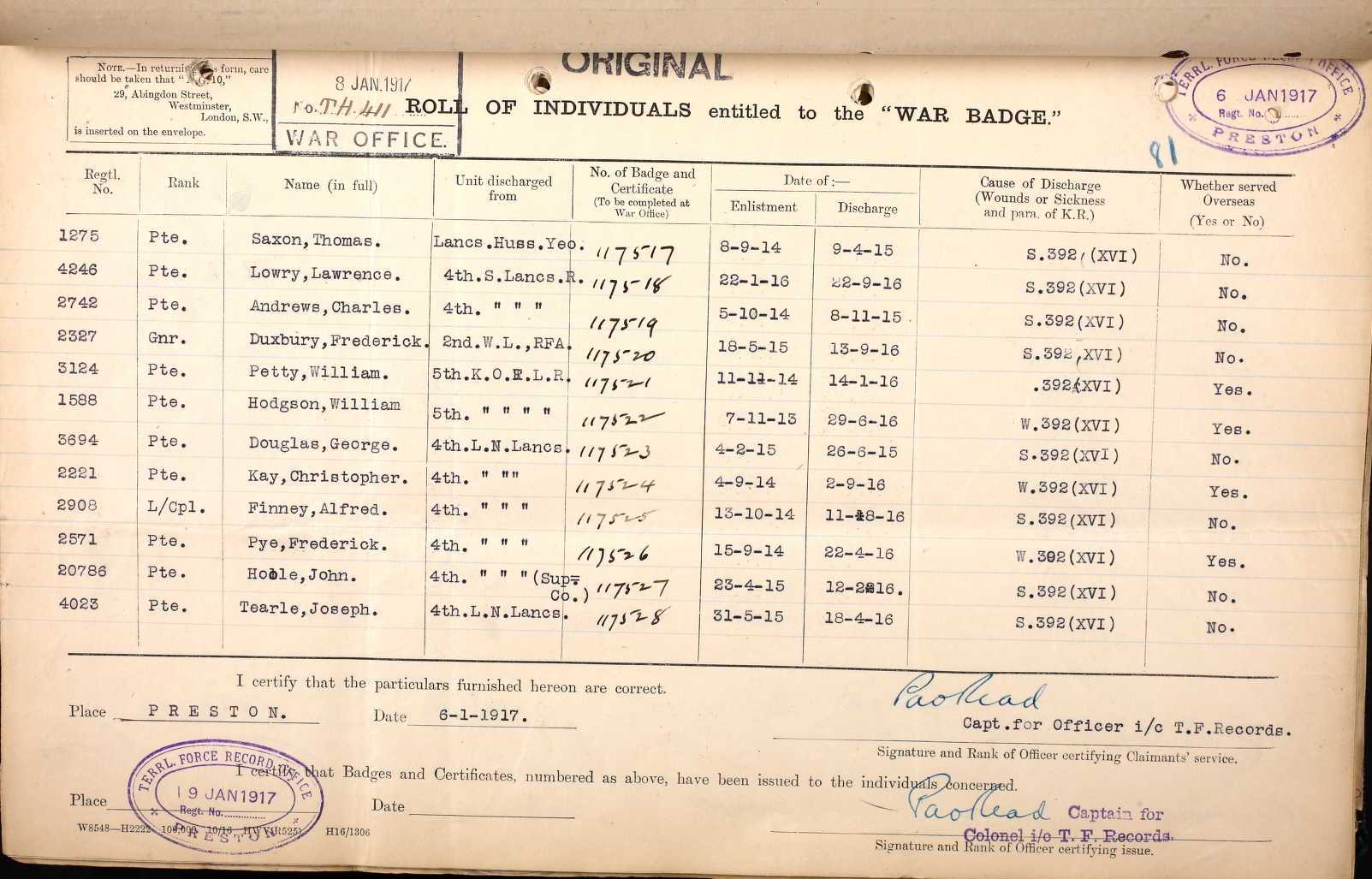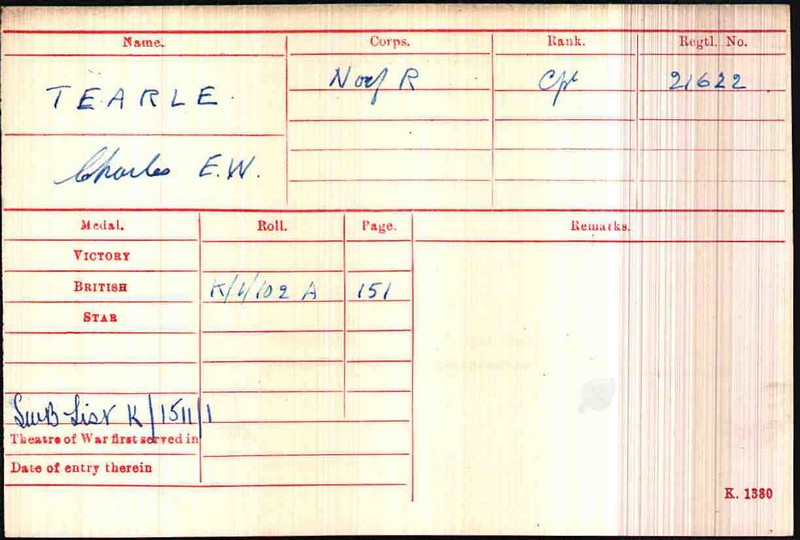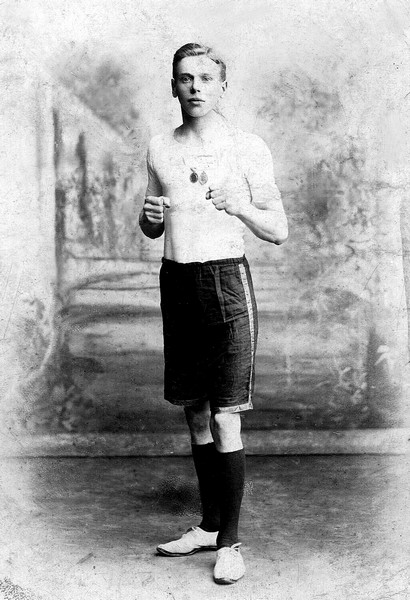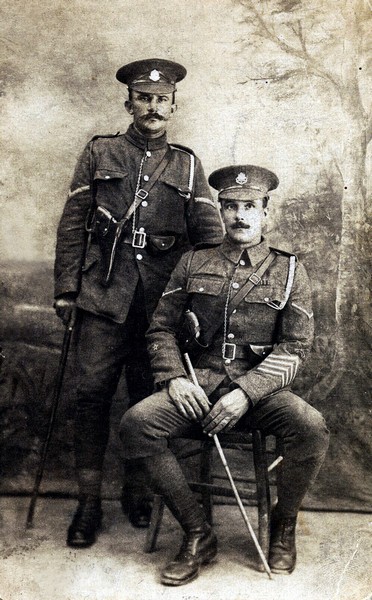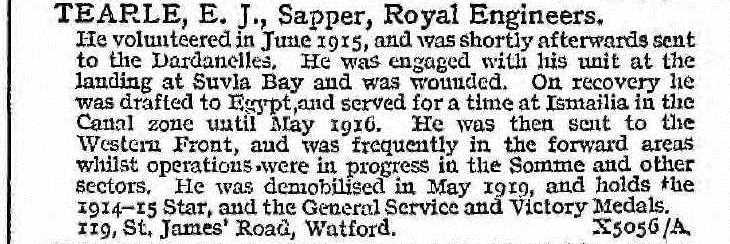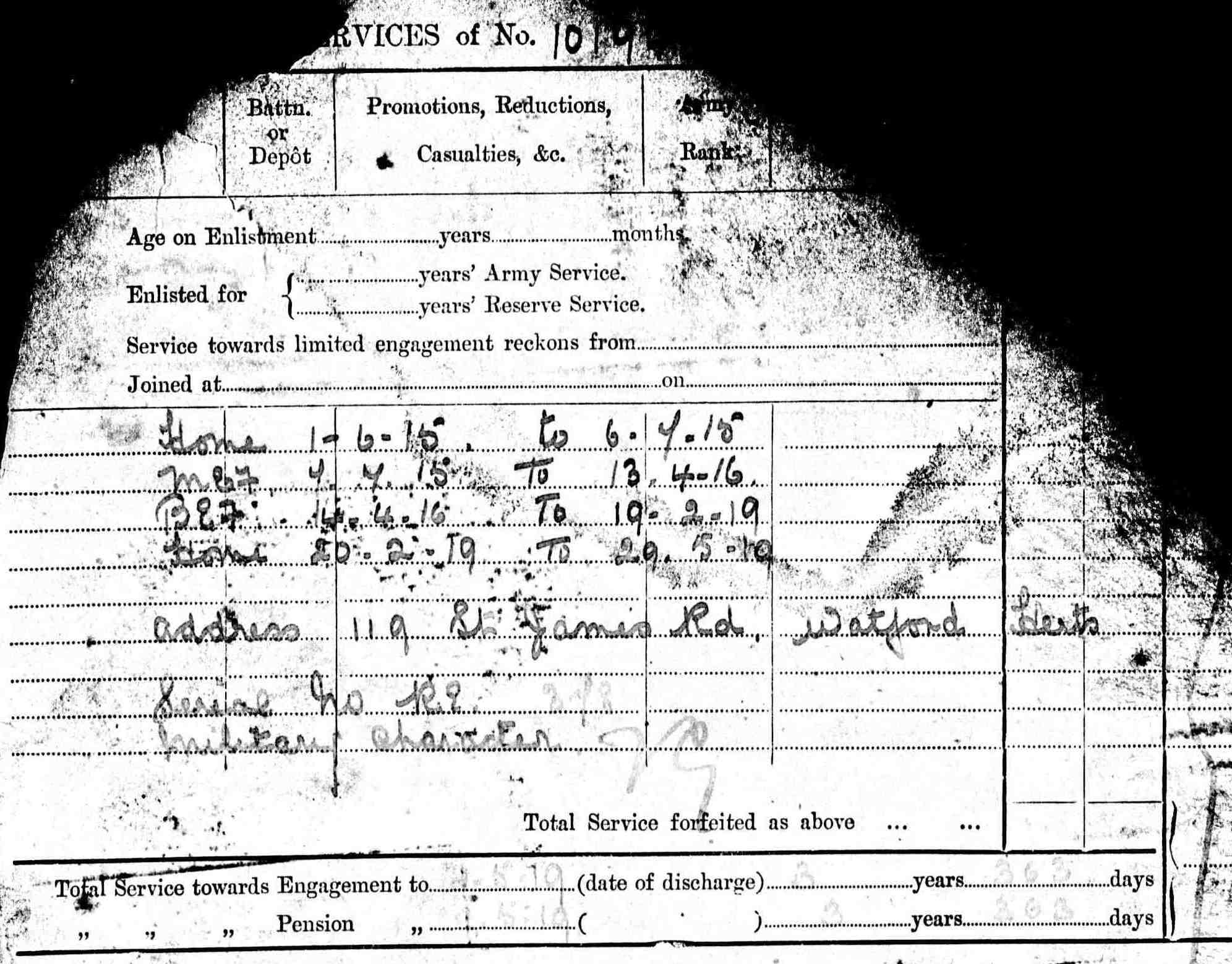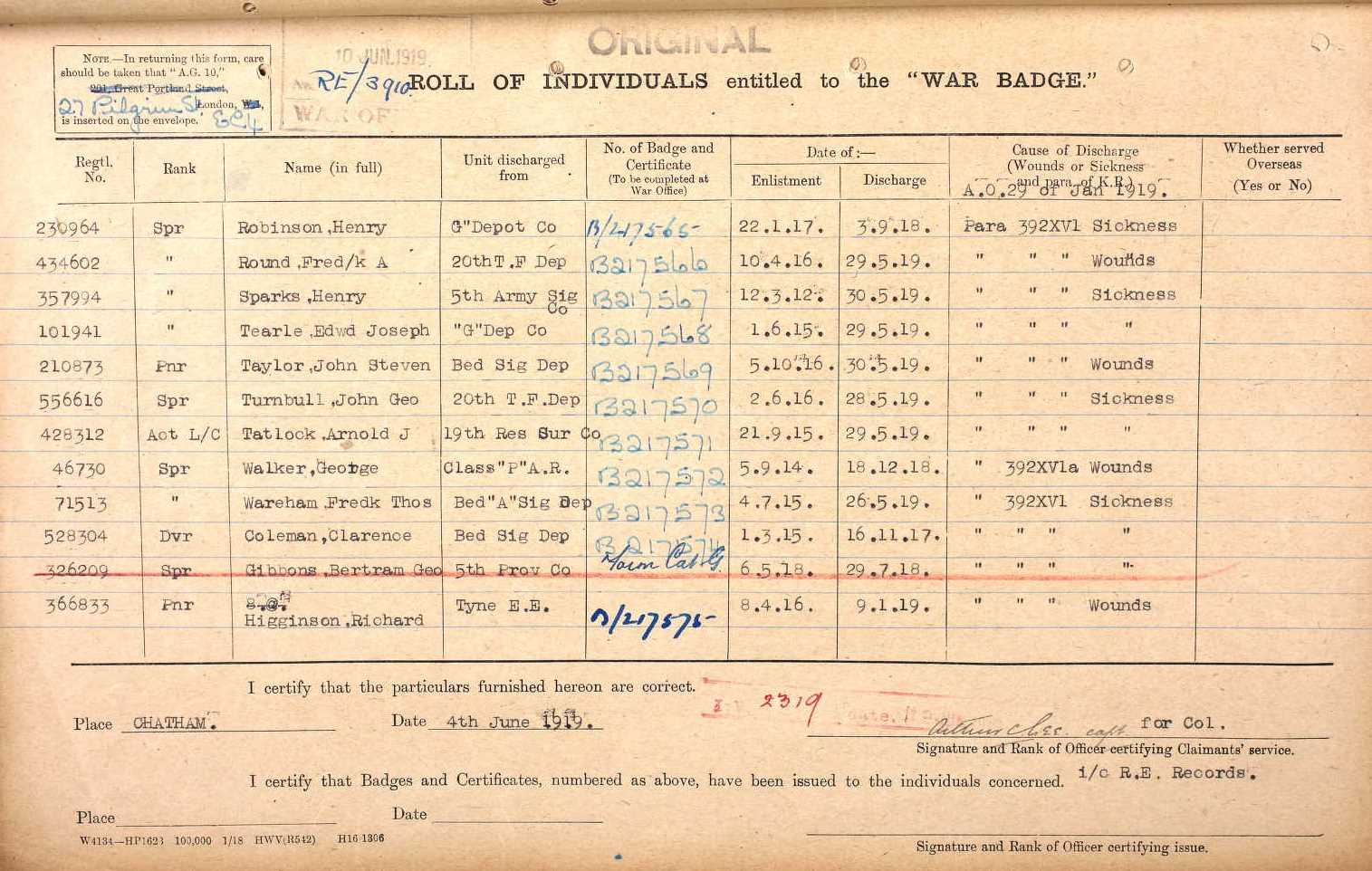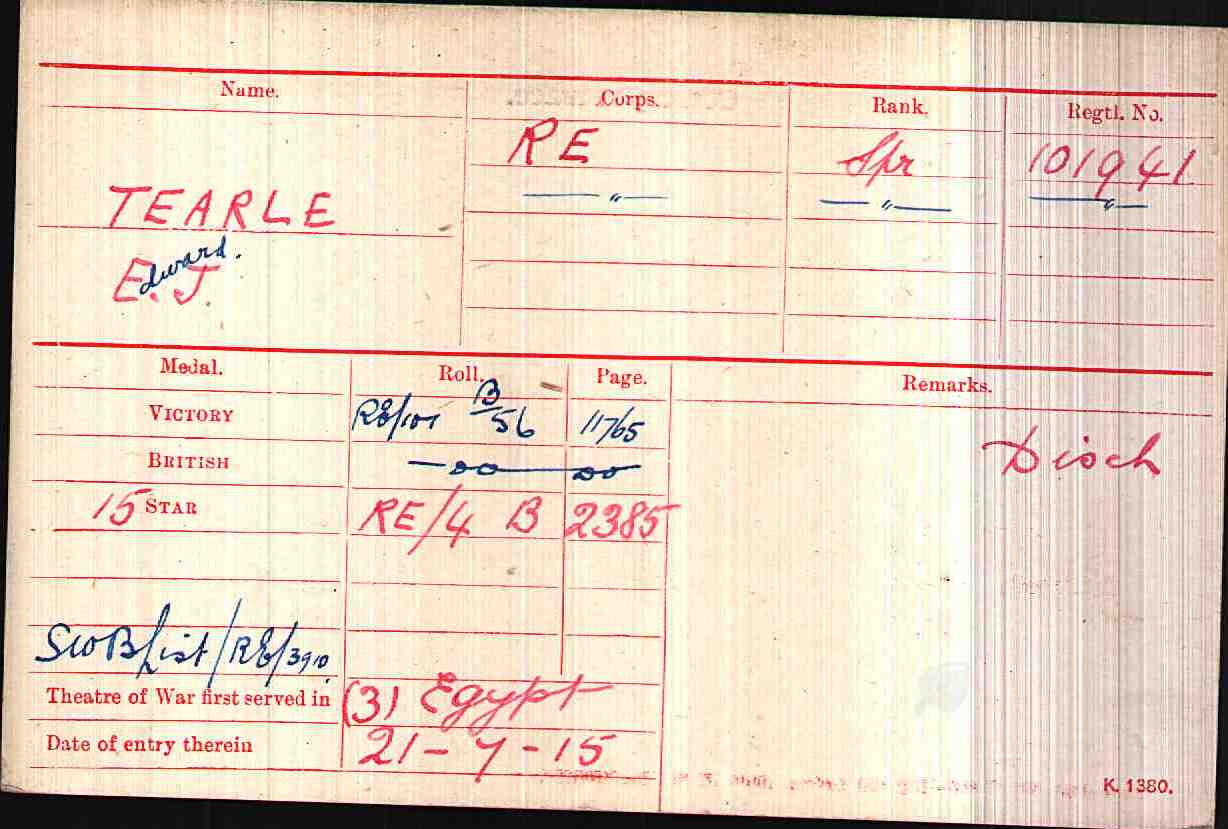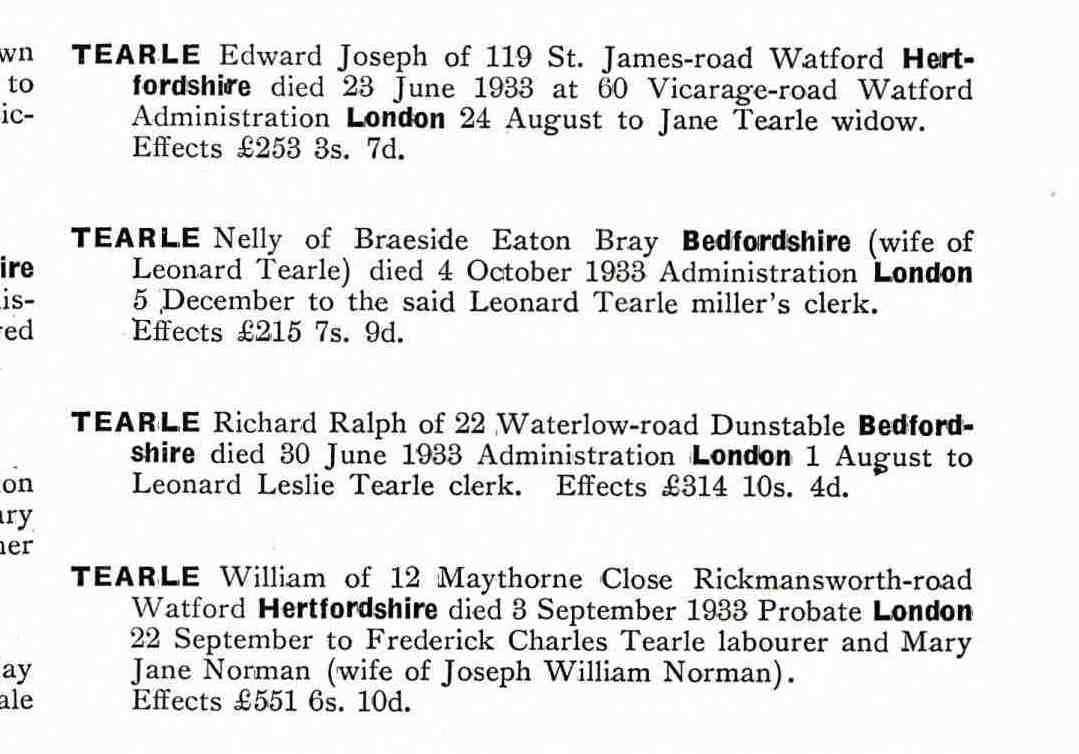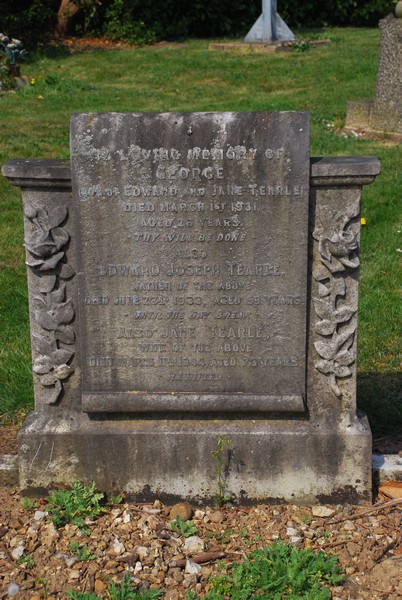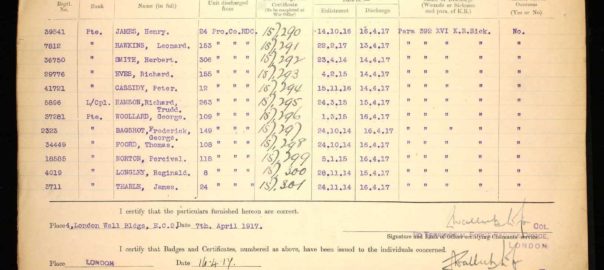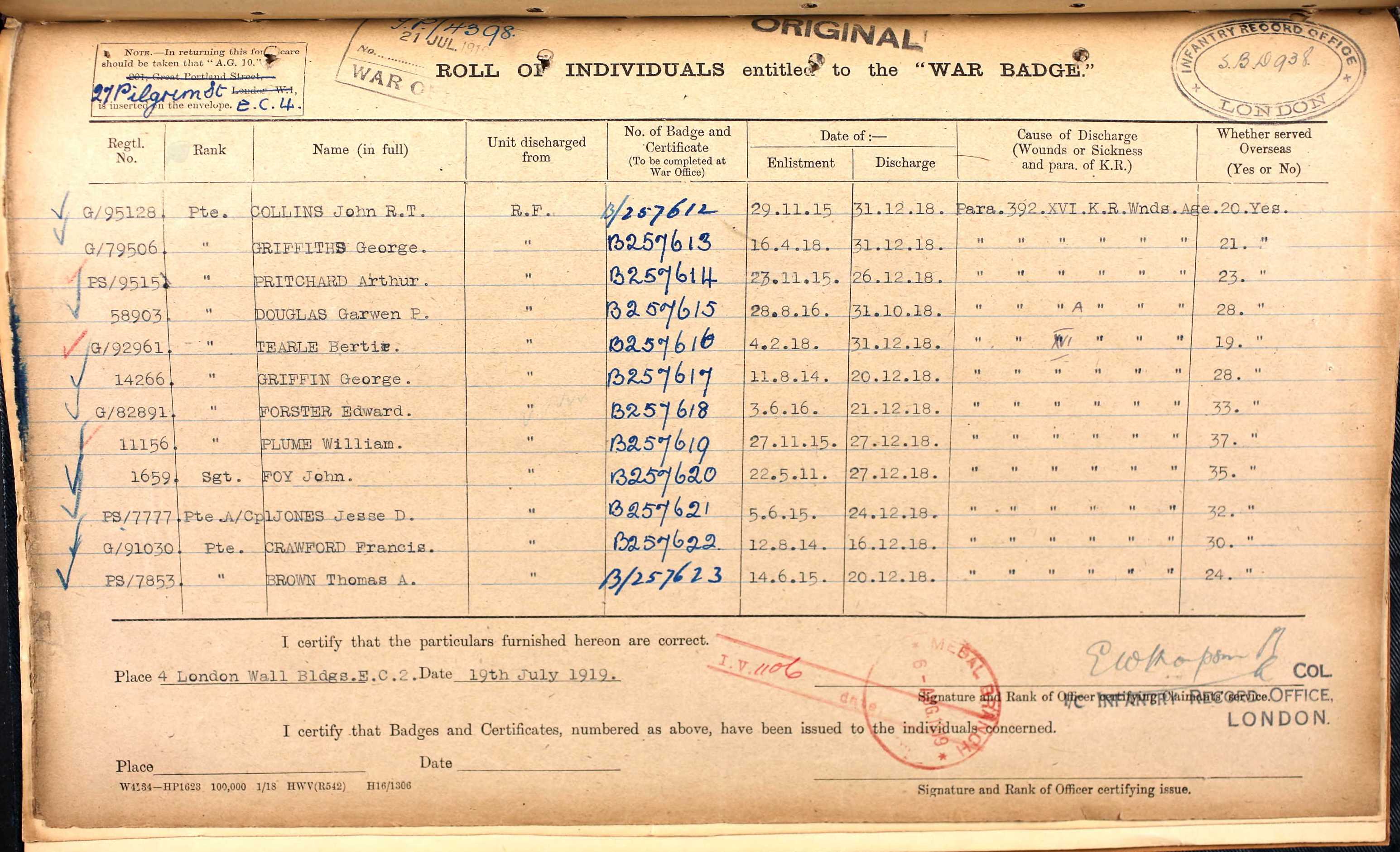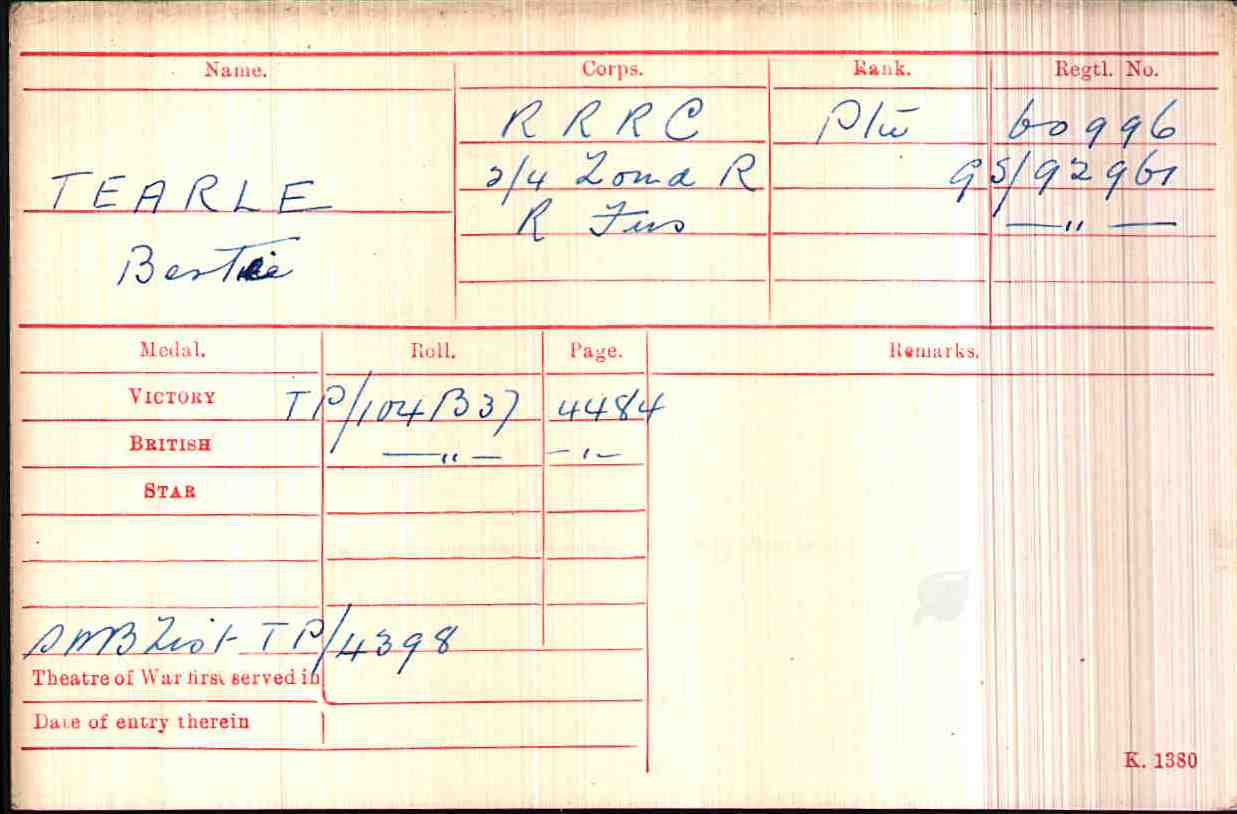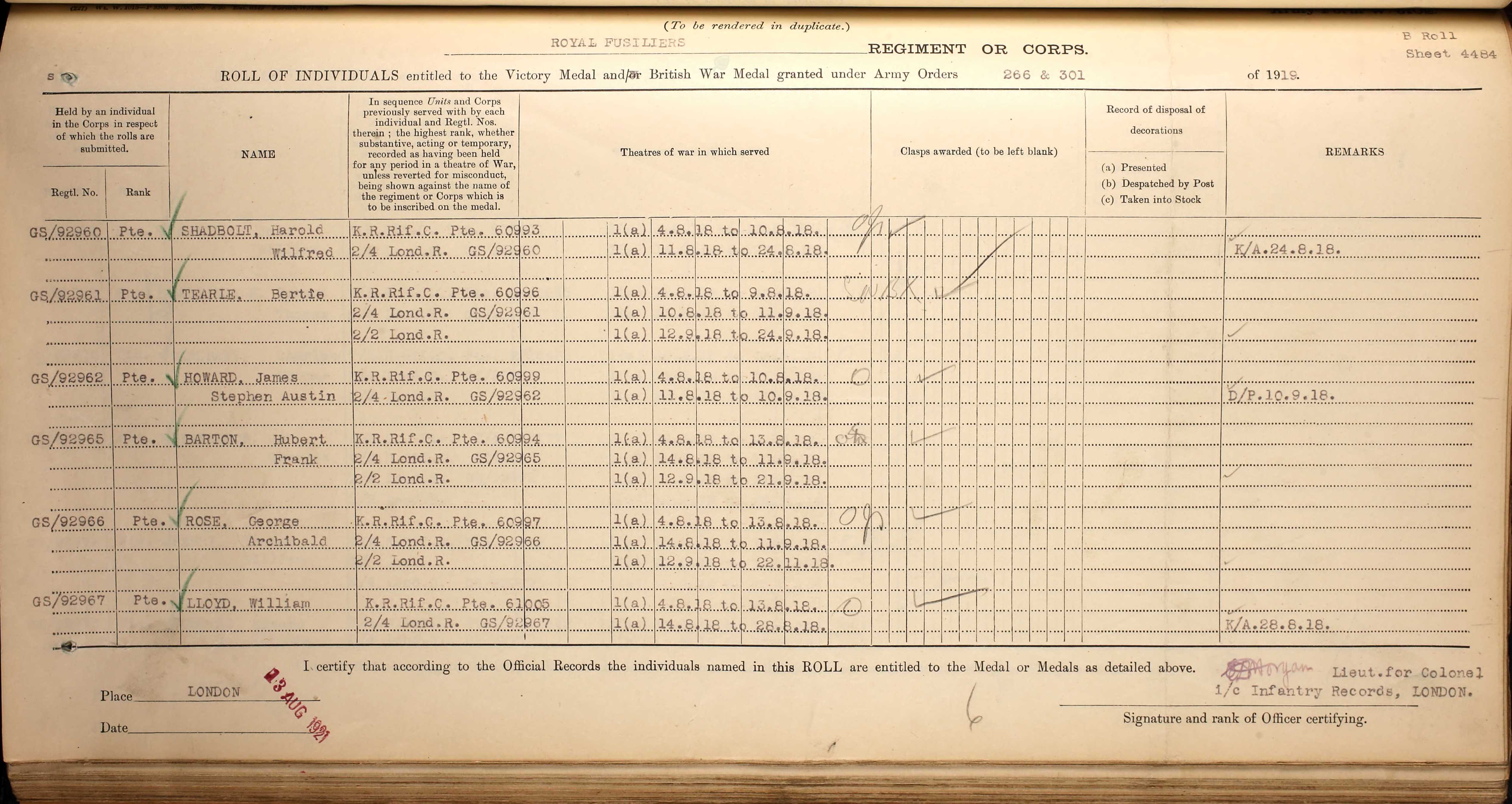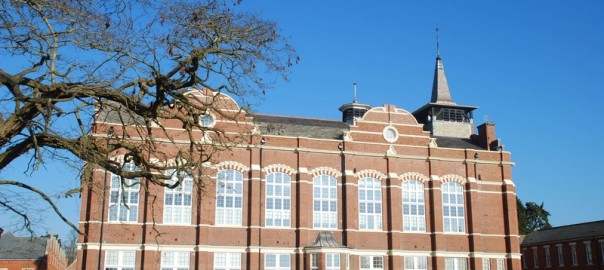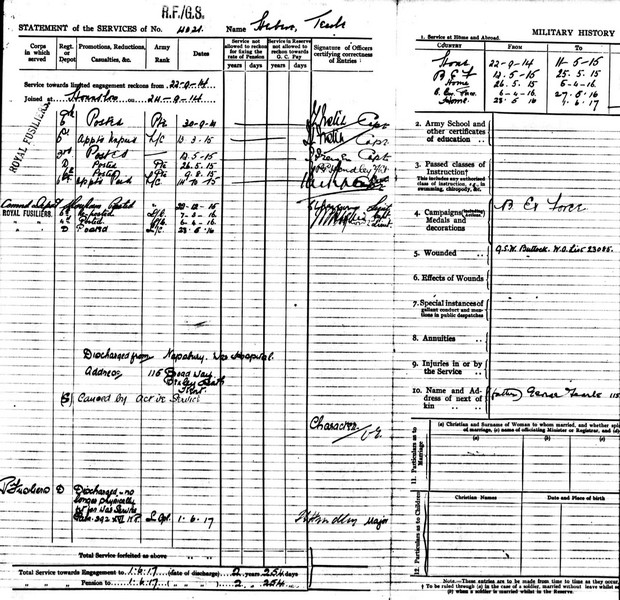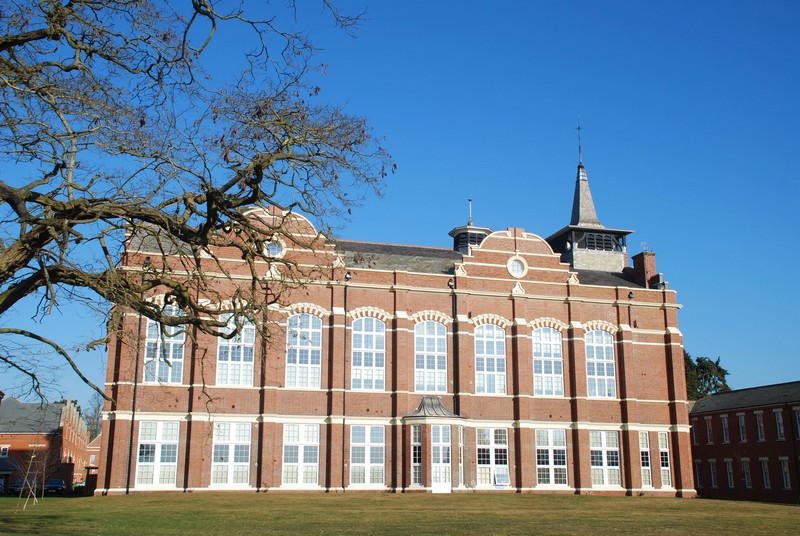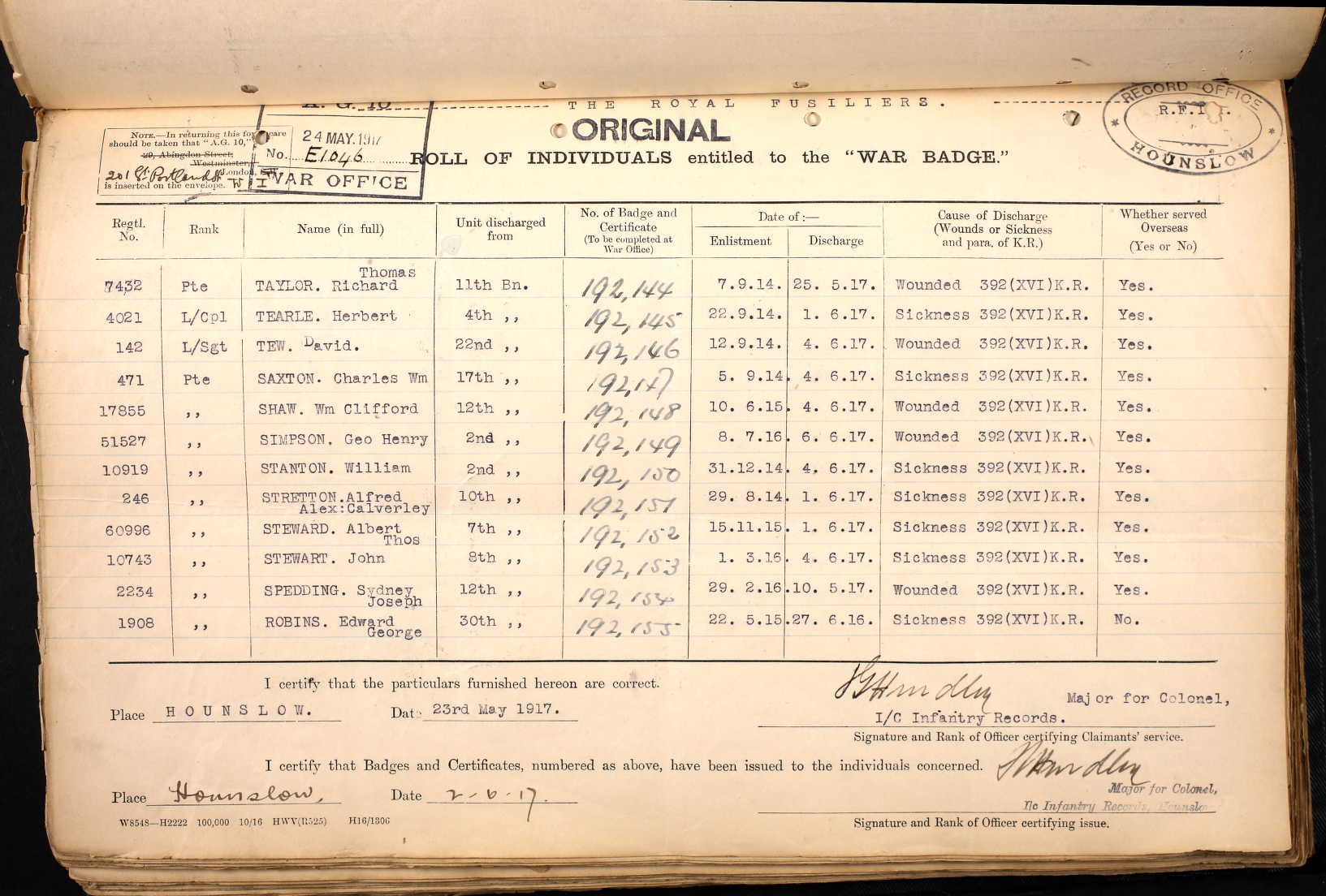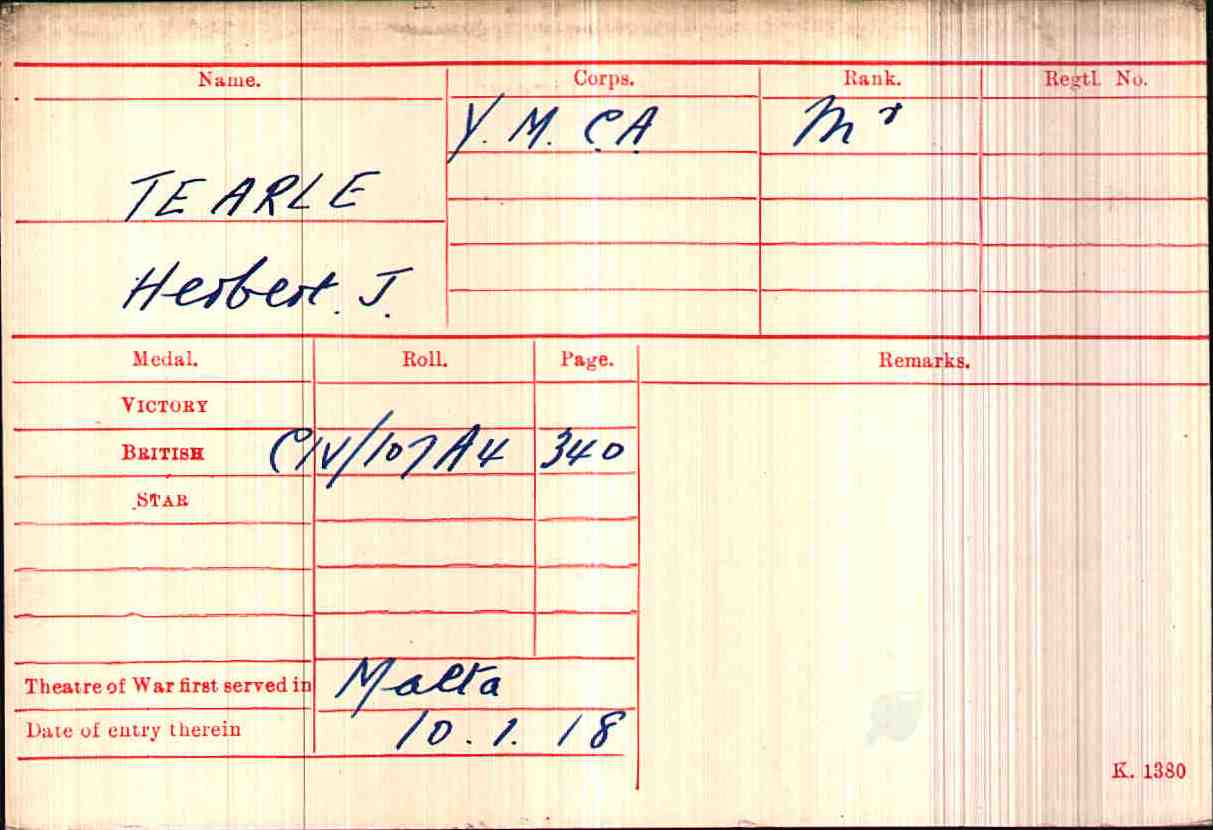We have already had a look at Edgar’s brother, Frederick John Tearle 1884 of Stanbridge, who came back from WW1, wounded forever. He lived with his family in the house on Peddars Lane and finally died in 1956.
Edgar’s story is somewhat different, but it starts the same way. His parents were John Tearle 1861 of Stanbridge and Annie nee Walker. In the 1901 census, the family was living in the second house from the corner of Tilsworth Rd. John was a carter on a farm, and Frederick, the eldest son, was a “cowman” on a farm. The enumerator somewhat dismissively called John an Ag Horse, and Frederick an Ag Cattle, by way of job description. Edgar was seven years younger than Frederick, and at 10yrs old, he was still at school. Alice Agnes at 6yrs and 1yr old Mabel Edith made up the family.
In the 1911 census, there are a few changes, and we learn a little more about John and Annie. Firstly, John is now a County Council employee and he is working on the roads. Annie and John are in their late forties and they have had seven children, of which two have died. That may explain the seven-year gap between Frederick and Edgar. And there is one addition to the family, little Eric who is five years old, and he is at school.
Three years pass, and in that time cataclysmic forces rise steadily across Europe until finally what was to become the Great War fired the first shots in Sarajevo. The first months were gentle enough, not much different from previous small wars in Europe, and it appeared to many that it would all “be over by Christmas.” Edgar, caught up in the moment, volunteered. This would be quite an adventure, and not to be missed. Here is his entry in National Roll of the Great War.
He was unbelievably lucky. He joined the war in the first few months, and was in Europe the following January, with just four months training. Professional soldiers are expensive to train, and expensive to replace. Volunteers, like Edgar and hundreds of thousands who followed him, were used in first-line positions to take the enemy fire and to probe the weak spots. How Edgar survived is a mystery. By the time he was wounded, he was a battle-hardened soldier who had a hastened return to the front line, to help show naive new troops how to fight, and stay alive.
Here is his medals card, showing his service awards, as noted above by National Roll.
You can see that he was in the Bedfordshire Regiment, number 14397, but interestingly, he was also in the Labour Corps. This was a huge operation to move supplies and maintain transport links.
Here he is, below, in his army uniform: this is a much-loved picture.
He was always in danger. The battles he was involved in are legendary for slaughter and the waste of men’s lives. Loos. The Somme. Passchendaele. Cambrai. These battles, even today, are the stuff of nightmares. How he stayed alive is the first mystery; how he kept his sanity is another.
But somehow or other, he did both and in 1922 he married Louisa Jane Abraham, in Leighton Buzzard, and they had four children. Here is Louisa Jane with her second daughter, Daphne, taken in about 1930.
At the end of his working life, Edgar received the Imperial Service Medal, for his work in the Post Office.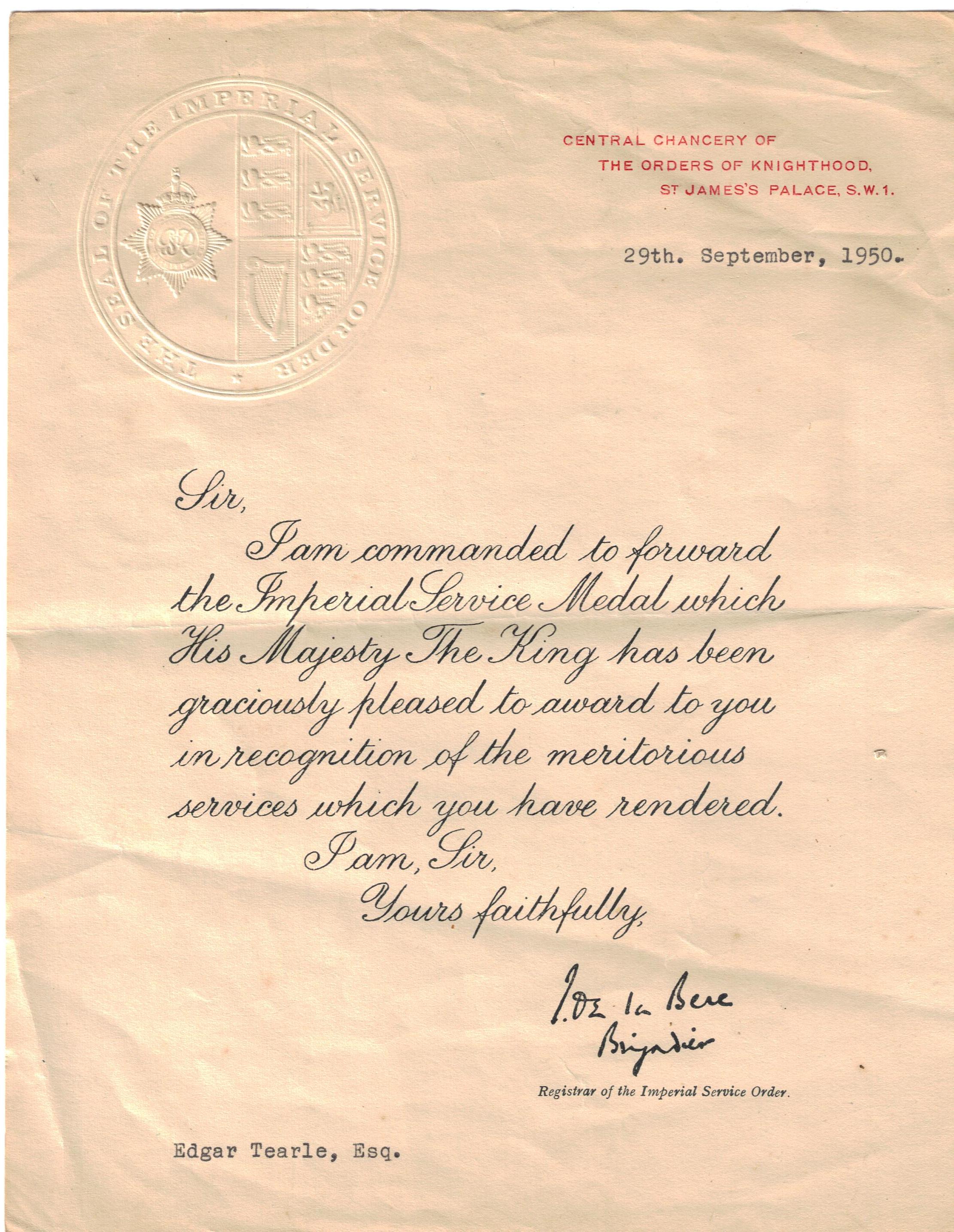
On the next page is the medal he would have received with the note, above:
Edgar was living in a house at 12 Lamas Walk, Leighton Buzzard, when he was struck so sick he was moved to Churchill Hospital in Oxford, where, unfortunately, he died, aged only 60yrs.
Here is his entry in the National Probate Register:
He was a fine man, and we can be proud that he was one of us.

